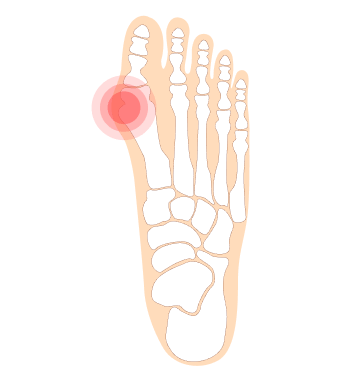Have your onions treated
Did you know that if you often wear tight, narrow shoes or high heels, you have a higher risk of getting bunions?
Bunions usually develop when the big toe is moved by an external force. After several years of pressure, the big toe is bent toward the other toes, creating a protrusion on your joint that can inflict a lot of pain. Early stage bunions may not do much harm at first, but bunions on your feet can cause difficulty walking and wearing shoes as they form and grow.
Different walking patterns can cause heavier loads on your feet. Wearing ill-fitting shoes usually causes you to develop poor walking habits, and poor walking habits usually cause bunions. This is why a bunion shoe is essential for those who suffer from bunions, because a bunion
The shoe has more space at the front of the shoe, which avoids external force on the big toe joint.
Confort Orthopédique is the most experienced specialist treating bunions using certified bunion products instead of surgery. If you are looking for relief from bunion pain. Here's where we can help you.
There are several possible causes of bunions.
- Wearing tight, narrow shoes can cause bunions.
- If you already have a bunion, wearing such shoes can make the situation worse.
- If your foot tends to bend inward a lot, this can also cause bunions, due to increased pressure on the inside of your big toe.
They can also develop due to:
- The shape of your foot.
- A deformation.
- A medical condition, such as arthritis.
Smaller bunions may also appear on your little toe, called bunions.
If you think you have a bunion, pay attention to the following:
- A large bump at the base of your big toe, usually on the outer side.
- Swelling, redness, or pain around the big toe joint.
- Corns or calluses on the first and second toes rubbing against each other.
- Constant pain or pain that comes and goes.
- Difficulty moving your big toe.
Bunions also have several stages, depending on the severity of the
shift.



















